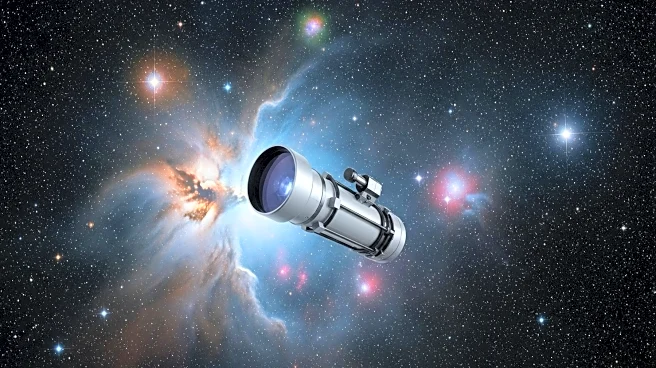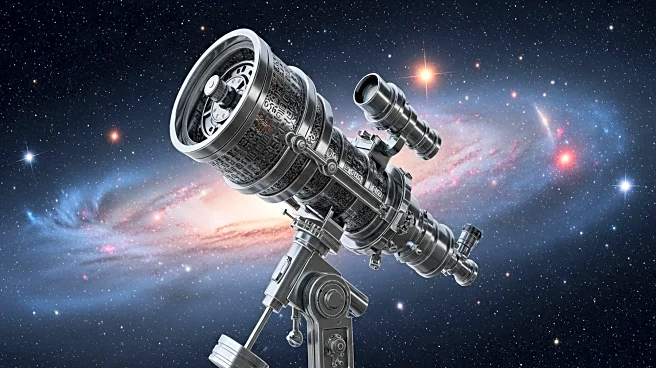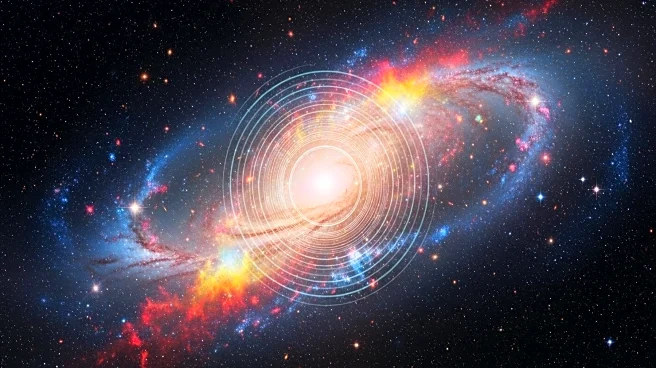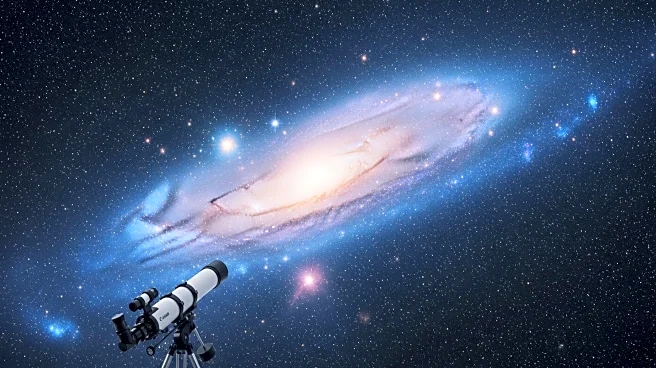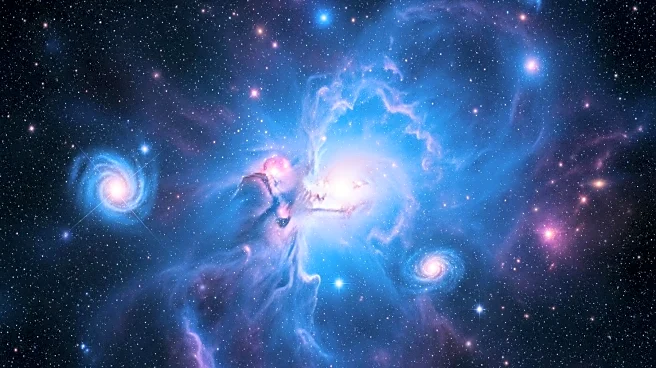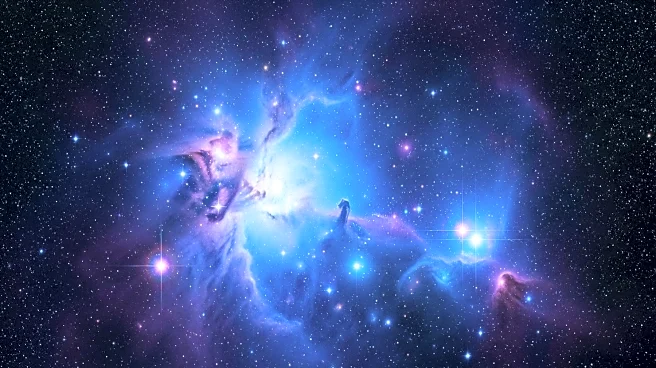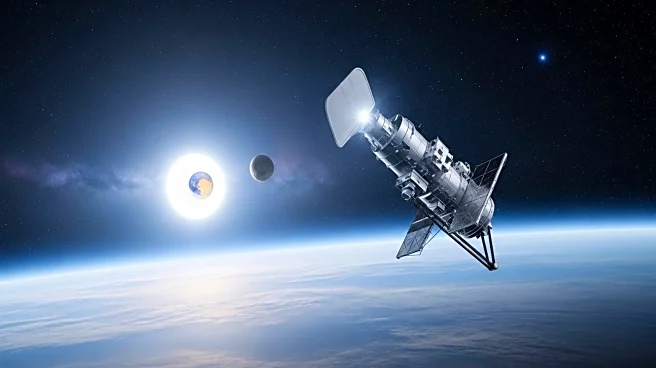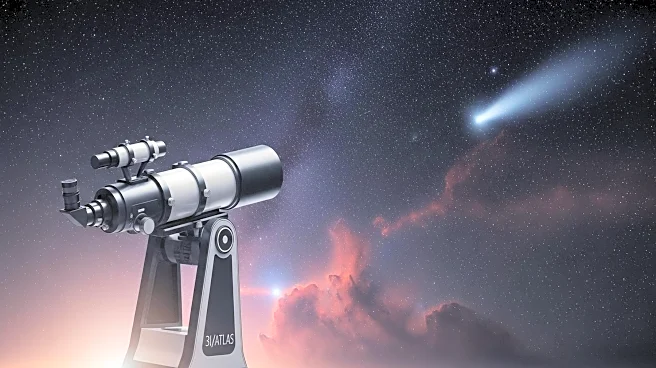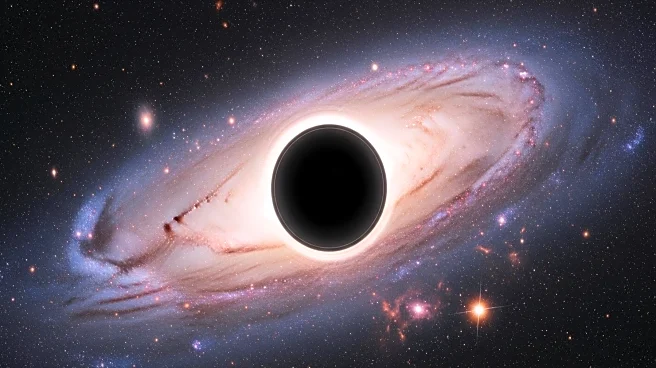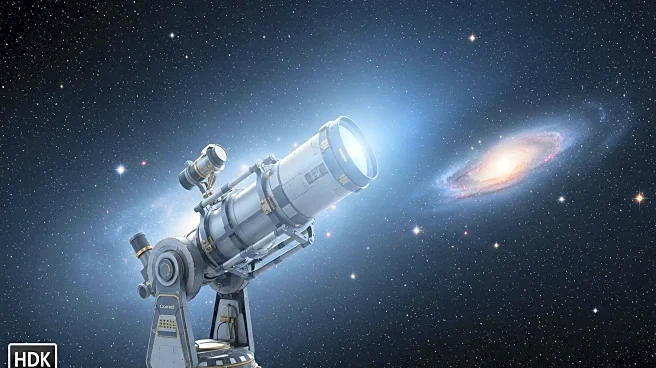What is the story about?
What's Happening?
NASA's James Webb Space Telescope has provided unprecedented detail of the Sagittarius B2 molecular cloud, the most massive and active star-forming region in the Milky Way. Webb's Near-Infrared Camera (NIRCam) and Mid-Infrared Instrument (MIRI) captured glowing cosmic dust and massive stars in near-infrared and mid-infrared light, respectively. The images reveal the dense clouds where stars are still forming, with the darkest areas indicating regions where star formation is ongoing.
Why It's Important?
The detailed images from the James Webb Space Telescope offer new insights into the process of star formation, particularly in the dense and active regions of the Milky Way. Understanding these processes is crucial for astronomers as it helps explain the lifecycle of stars and the evolution of galaxies. The ability to observe star formation in such detail could lead to breakthroughs in astrophysics and enhance our understanding of the universe.
What's Next?
Further analysis of the data collected by Webb's instruments will continue, with astronomers aiming to uncover more about the masses and ages of the stars within Sagittarius B2. This ongoing research could provide answers to longstanding questions about star formation and the conditions that lead to such active regions in the galaxy.
Beyond the Headlines
The discovery highlights the capabilities of the James Webb Space Telescope in observing phenomena that were previously obscured by dense cosmic dust. This advancement in technology marks a significant step forward in space exploration and the study of the universe.
AI Generated Content
Do you find this article useful?
